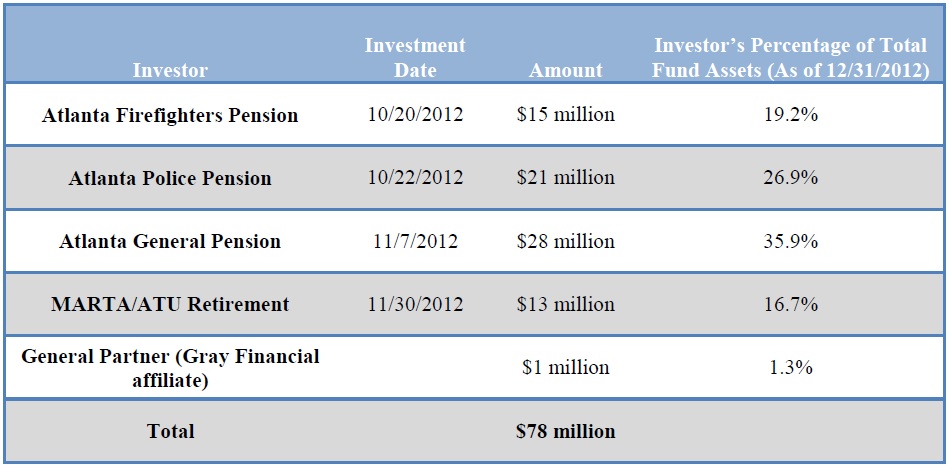The US regulator has charged an advisory firm and two of its executives with fraud, claiming they sold unsuitable investments to public pension funds.
The Securities and Exchange Commission (SEC) filed the charges yesterday, alleging that Gray Financial Group, its founder Laurence Gray, and its co-CEO Robert Hubbard “breached their fiduciary duty” by persuading public pension funds for the city of Atlanta, Georgia to invest in an “alternative investment fund” in breach of state law.
Gray Financial Group—which operates as Gray & Company and manages more than $10 billion—collected “more than $1.7 million” in fees from pension funds for firefighters, police, and other public sector workers, the SEC’s statement said.
“We allege that Gray Financial Group and its senior officials put their own interests ahead of their clients, and Gray deliberately misrepresented that the recommended investments were permissible under Georgia law,” said Walter Jospin, director of the SEC’s Atlanta Regional Office. “Public pension funds and their beneficiaries deserve better from their advisors.”
“The claims and arguments in the SEC’s filing are without merit,” said Terry Weiss, a lawyer at Greenberg Traurig representing Gray Financial Group, Gray, and Hubbard.
Georgia state law was changed in 2012 to allow pension funds to allocate to “alternative investments”, subject to strict limits.
When Gray Financial Group advised the pension funds to invest in its own GrayCo Alternative Partners II fund, there were fewer than four other investors and less than $100 million in total assets in the fund, the SEC alleged—both breaches of Georgia law. In total four pensions invested $77 million in the fund, the SEC said.
Public pensions in the state must limit their investments to a maximum of 20% of a fund’s capital, but the SEC said two pension funds exceeded this limit.
The SEC’s filing alleged that the company, Gray, and Hubbard had “recommended, offered, and sold” investments in the GrayCo Alternative Partners II fund “despite the fact that they knew, were reckless in not knowing, or should have known that these investments did not comply with the restrictions on alternative investments imposed by Georgia law”.
“Additionally, in October 2012, when recommending GrayCo Alt. II to one of these clients, Gray Financial and Gray made specific material misrepresentations concerning the investment’s compliance with the Georgia law and the number and identity of prior investors in the fund,” the SEC said.
“The SEC is once again bringing its charges in an unconstitutional and home-cooked administrative proceeding rather than trying a case before an impartial US district court and a jury of one’s peers,” Weiss said, according to Reuters. He added that the company would “vigorously defend itself”.
 Breakdown of investments in the GrayCo Alternative Investment Partners II fund. Source: SEC
Breakdown of investments in the GrayCo Alternative Investment Partners II fund. Source: SEC
Related Content:Is Your Consultant Breaking the Law?


